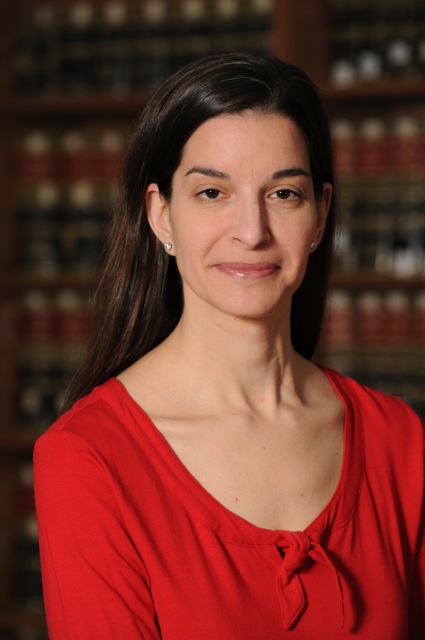The academic year has started at the law school where I teach third-year students advocacy skills and legal doctrine in the area of juvenile courts and delinquency.
and delinquency.
At the beginning of each semester, I meet individually with each of my students in the Juvenile Justice Clinic to get a sense of their backgrounds, interests, and expectations. I answer their questions and try to assuage their concerns, for within a matter of weeks they will be traveling to unfamiliar neighborhoods for client interviews, learning North Carolina criminal law and procedure, and appearing in juvenile delinquency court for motions and hearings.
In one recent conversation, I used the phrase, “It’s a small world,” when a student mentioned someone I had known decades ago. “Actually,” he replied, with a half-smile, “it’s not a small world; it’s just a poorly mixed world.”
That evening I recalled a visit I had made several years earlier to the home of a juvenile client. The boy, whom I’ll call Daniel, resided a mere mile from my house. He was 12 and lived with his parents and three younger siblings in a single-story concrete structure that was more like a free-standing garage or outbuilding than anything else; inside it was sparsely furnished, dark and dank. I had never been on his block and was unfamiliar with the surrounding streets.
Upon entering and seeing there was no place to speak with Daniel alone, I sat with him outside on the curb. We discussed his court case, and I learned that he had severe learning disabilities, asthma, and a hearing impairment that resulted from chronic ear infections. I went inside and spoke with his parents, well-meaning folks who worked when they could find jobs and did their best to patch together what was left of the social safety net to feed and clothe their children. They offered me a soft drink, and I tried not to flinch as a cockroach scrambled over my feet.
Then I went home. At that time, I lived with my husband and two daughters on a cul-de-sac in a tony subdivision with a soccer field and lush backyards. There were rooms in our house that we rarely used. After two and half hours with Daniel and his family, the five-minute drive failed to prepare me for the culture shock I experienced upon entering my neighborhood.
A poorly mixed world indeed.
It is hardly surprising that Americans spend the largest percentage of their income on housing and that residential areas are now segregated not only by race and ethnicity but also by socioeconomic class. In 1970, 66 percent of us lived in middle-income neighborhoods; in 2008, the percentage had dropped to 43. At the same time, the numbers of those at the furthest extremes of poverty and wealth have increased by 60 percent. As a result, we are much more likely than 40 years ago to reside in areas where the majority of our neighbors – whether rich or poor – are from the same income class.
This means that children like Daniel are next door to other struggling families, all too overwhelmed to help each other. It also means that children like mine rarely encounter peers who do not have an over-abundance of material goods, blinding them to their own privilege.
Segregated residential areas create unequal access to public resources – parks, community centers, and playgrounds – as well as to amenities such as sidewalks, streetlights, and public sewer and water lines. Such segregation also translates into unequal exposure to environmental and social hazards, such as pollution and crime.
Perhaps most critically, homogeneous neighborhoods mean homogeneous schools. Yet, even in school districts that are integrated by class, upper-income families generally spend nine times as much on their children as low-income ones. Data show that in 2012, parents of school-age children expected to spend an average of $688 at the start of the academic year, 14 percent more than last fall. Sixty percent of those surveyed planned to buy some type of electronic device.
Family income is also closely related to academic performance, and as the income gap has widened, the achievement gap has also widened. In fact, the achievement gap in families from the highest and lowest income levels is 30 to 40 percent larger among children born in 2001 than it was 25 years ago. Family income is now nearly as strong a predictor of a child’s success in school as the parents’ level of education.
So, how do we remedy a situation in which children who live in adjacent – though very different – neighborhoods have little or no opportunity to interact? What values are we promoting when future achievement is determined by economic status? When will we confront the fact that social mobility is no longer possible for many Americans?
My students often tell me that the most profound aspect of their law school clinic experience is getting to know their young clients. These bright and motivated students are on the brink of their professional lives. They are open-minded. They are capable of effecting change.
Given the speed with which technology is advancing, I imagine that the world will continue to feel small. For children like Daniel and my own girls, however, it must first be more effectively mixed.
Tamar Birckhead is an associate professor of law at the University of North Carolina at Chapel Hill and a criminal defense attorney with more than 20 years of experience. She is a faculty supervisor of the UNC Juvenile Justice Clinic, an academic program in which third-year law students defend children charged with criminal offenses in juvenile delinquency court.
























